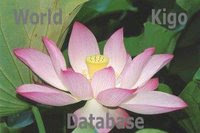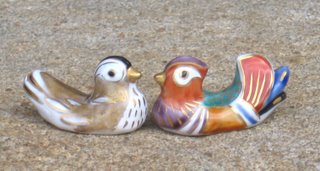[ . BACK to DARUMA Museum TOP . ]:::::::::::::::::::::::::::::::::::::::::::::::::::::::::::::::::::::::::::::::::::::::::::::::::::::
Gion Festival Float Tapestry source : Taisaku Nogi FB
source : Taisaku Nogi FB Top part
a pair of Japanese dragonsBottom part
The tapestry was made by the tapestry industry "Gobelin" in France in 17th century, and was imported recently (1980's).
European tapestries are very common in Gion Festival.
函谷鉾 Kankoboko Lions Tapestry 玉取り獅子図 source : kobayan
source : kobayan  - More tapestry photos by Taisaku Nogi - facebook -
- More tapestry photos by Taisaku Nogi - facebook -:::::::::::::::::::::::::::::::::::::::::::::::::::::::::::::::::::::::::::::::::::::::::::::::::::::
quoteGobelin ゴブラン織り
was the name of a family of dyers, who in all probability came originally from Reims, and who in the middle of the 15th century established themselves in the Faubourg Saint Marcel, Paris, on the banks of the Bièvre.
The first head of the firm was named Jehan (d. 1476). He discovered a peculiar kind of scarlet dyestuff, and he expended so much money on his establishment that it was named by the common people la folie Gobelin. To the dye-works there was added in the 16th century a manufactory of tapestry.
The family's wealth increased so rapidly that in the third or fourth generation some of them forsook their trade and purchased titles of nobility. More than one of their number held offices of state, among others Balthasar, who became successively treasurer general of artillery, treasurer extraordinary of war, councillor secretary of the king, chancellor of the exchequer, councillor of state and president of the chamber of accounts, and who in 1601 received from Henry IV the lands and lordship of Brie-Comte-Robert. He died in 1603. The name of the Gobelins as dyers cannot be found later than the end of the 17th century.
In 1662 the works in the Faubourg Saint Marcel, with the adjoining grounds, were purchased by Jean-Baptiste Colbert on behalf of Louis XIV and transformed into a general upholstery manufactory, the Gobelins manufactory.
© More in the WIKIPEDIA !:::::::::::::::::::::::::::::::::::::::::::::::::::::::::::::::::::::::::::::::::::::::::::::::::::::
白楽天山(はくらくてんやま)Hakurakuten Float source : kyoto-k.sakura.ne.jp Hakurakuten
source : kyoto-k.sakura.ne.jp Hakurakuten
Haku Kyoi 白居易(はくきょい) Bai Letian
(772 - 846)quoteA Chinese poet of the mid-Tang dynasty, depicted in a tradition of imaginary portrait paintings. Although his real name was Juyi 居易 (Jp: Kyoi), Haku Rakuten also took the name Xiangshan Jushi 香山居士 (Jp: Kouzan Koji) or the "
Retired scholar of the Fragrant Mountain."
Moderately successful as an official, he had a high post in Changan 長安 but was demoted for his outspoken social criticism. As a poet, Bai Juyi's verse achieved a simplicity of expression that, in part, led to his popularity among his contemporaries and his long-lived fame in Japan.
In particular, the self-edited collection of his work, the BAISHI WENJI 白氏文集 (Jp: HAKUSHI MONJUU), influenced early Heian literature. Best known are his narrative poems Changhenge 長恨歌 (Jp: CHOUGONKA) or the "Song of Everlasting Sorrow" (see Youkihi 楊貴妃) and Pipaxing 琵琶行 (Jp: BIWAKOU) or the "Song of the Lute." Both ballads were well-known in Japan and provided the subjects for painting. An early Japanese imaginary portrait of Haku Rakuten, with an inscription dated to 1284 by Zen priest Wuxue Zuyuan 無学祖元 (Jp: Mugaku Sogen, 1226-86), is probably based on an earlier Chinese portrait.
The early landscape screen (Jp:senzui byoubu 山水屏風, late 11c), formerly in Toji 東寺 (now Kyoto National Museum), is thought to depict Bai Juyi living in retirement, and likely is also based on a Chinese prototype.
Another painting theme including Bai is the meeting of nine old gentlemen in reclusion (Kyuurou 九老). A later, and purely Japanese treatment of Bai juyi, derives from the Noh 能 drama HAKURAKUTEN in which the Chinese poet comes to Japan only to be defeated in a poetry contest by a fisherman who is really the god of Sumiyoshi Shrine (
Sumiyoshi myoujn 住吉明神) in disguise.

白楽天図屏風 - 尾形光琳筆
by Ogata KorinThe screen by Ogata Kourin 尾形光琳 (1658-1716) is the best-known example of this theme.
source : JAANUS 
:::::::::::::::::::::::::::::::::::::::::::::::::::::::::::::::::::::::::::::::::::::::::::::::::::::
Decoration on the KOI float
koi yama 鯉山(こいやま)carp float 
Tapestry showing the story of the War of Troy, Greece,
according to the writings of Homer.
quote紀元前1200年頃のトロイ戦争を題材としたギリシア詩人ホメロスの叙事詩「イーリアス」の中の場面、「トロイア戦争物語」が描かれています。
鯉山を飾るタペストリーは、ブラバン・ブリュッセルの略号「B.B」という文字が発見されたことで現在のベルギー・ブリュッセルで製作されたことが明らかになっています。
source : www.koiyama.com This tapestry relates to Hasekura Tsunenaga 支倉常長, an envoy of Date Masamune 伊達政宗 from Sendai, to travel to Rome.
source : general_sasaki Hasekura Rokuemon Tsunenaga (支倉六右衛門常長,
or "Francisco Felipe Faxicura")
(1571–1622) was a tragic samurai who was sent to Europe as a Japanese ambassador by Date Masamune (伊達政宗), the daimyo of Sendai.
In the years 1613 through 1620, Hasekura headed a diplomatic mission to the Vatican in Rome, traveling through New Spain (arriving in Acapulco and departing from Veracruz) and visiting various ports-of-call in Europe. This historic mission is called the Keichō Embassy (慶長使節), and follows the Tenshō embassy (天正使節) of 1582. He is conventionally considered the first Japanese ambassador in the Americas and in Europe.
 Hasekura in Rome, 1615
Hasekura in Rome, 1615Although Hasekura's embassy was cordially received in Europe, it happened at a time when Japan was moving toward the suppression of Christianity. European monarchs such as the King of Spain thus refused the trade agreements Hasekura had been seeking. Hasekura returned to Japan in 1620, but he was immediately placed in durance and died of illness a year later in frustration.
© More in the WIKIPEDIA !. Hasekura Ki 支倉忌 Hasekura Memorial Day . kigo for autumn
:::::::::::::::::::::::::::::::::::::::::::::::::::::::::::::::::::::::::::::::::::::::::::::::::::::
quoteRug's secrets to unravel in GionThe results of a nifty piece of historical sleuthing are on display in Kyoto through July 18 in an exhibition timed to coincide with the city's renowned Gion Festival.
Visitors to that famed festival in years past will remember that each of the majestic, multistoried yama floats in the monthlong festival's climactic parade (held each year on July 17) is adorned with an intricate tapestry.
One in particular, the Minami Kannon Yama float, which is traditionally the last in the parade and is dedicated to Yoryu Kannon and Zenzai Doji (Sudhana), features a tapestry that suggests the influence of the 15th-century Kano School of painting, with graceful depictions of natural scenery. So far, so ho-hum.

But now the plot thickens:
A very similar tapestry was recently discovered in the
Tapi Collection, a well-known collection of tapestries in India. Established by the Shah family, which operates India's successful Garden Silk Mills company, the collection houses Indian fabrics dating back to the 14th century — many of which were made for export.
Thus the exhibition will reveal how the 祇園祭 南観音山
Minami Kannon Yama tapestry was likely to have been a gift made to Japan by representatives of the Dutch East India Co., probably in the 18th century. Its Japanese-style decoration was probably made with its ultimate owners in mind.
source : Japan Times, July 2012 :::::::::::::::::::::::::::::::::::::::::::::::::::::::::::::::::::::::::::::::::::::::::::::::::::::
. WKD : Gion Festival (Gion matsuri 祇園祭り) :::::::::::::::::::::::::::::::::::::::::::::::::::::::::::::::::::::::::::::::::::::::::::::::::::::
[ . BACK to WORLDKIGO . TOP . ][ . BACK to DARUMA MUSEUM TOP . ]:::::::::::::::::::::::::::::::::::::::::::::::::::::::::::::::::::::::::::::::::::::::::::::::::::::
























